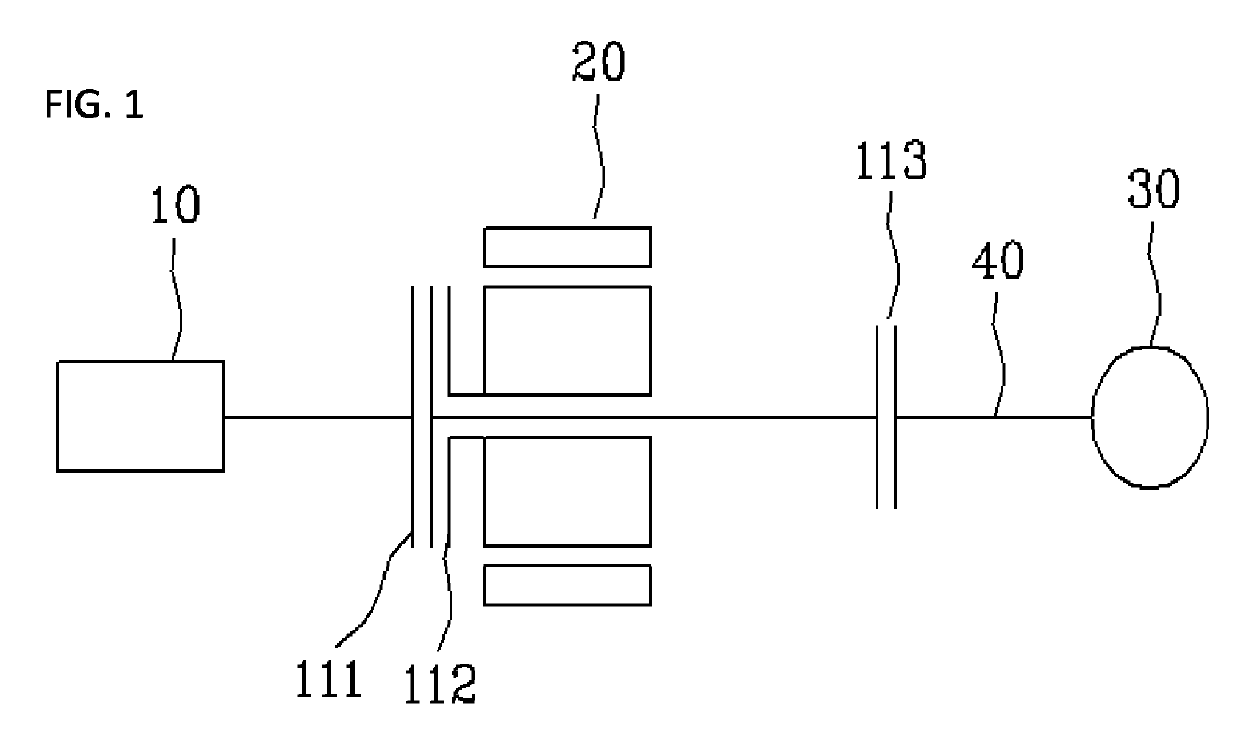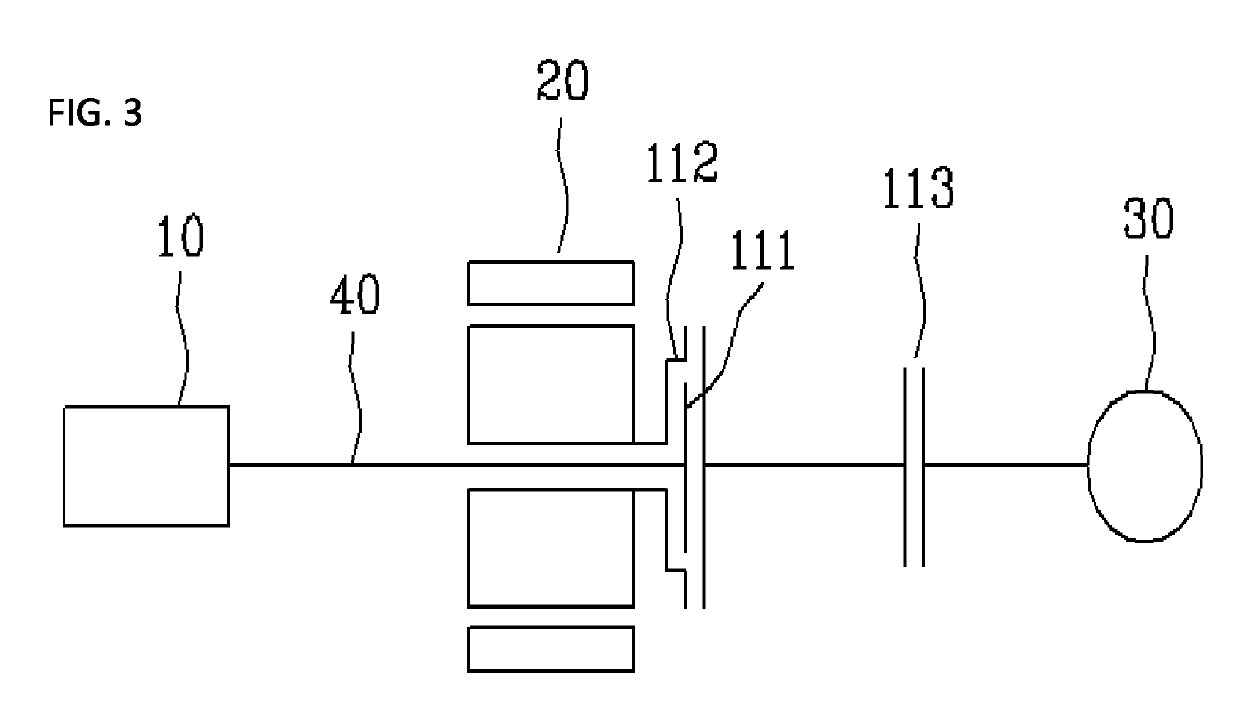Power transmission structure of hybrid vehicle with one motor generator and three clutches
a technology of hybrid vehicles and transmission structures, which is applied in mechanical equipment, transportation and packaging, and manufacturing, etc., can solve the problems of increasing fabrication costs, increasing fuel consumption, and complicated engine room design, so as to improve the fuel efficiency of the engine, prevent the effect of output power reduction, and large capacity
- Summary
- Abstract
- Description
- Claims
- Application Information
AI Technical Summary
Benefits of technology
Problems solved by technology
Method used
Image
Examples
Embodiment Construction
[0043]Reference will now be made in greater detail to exemplary embodiments of the present invention, examples of which are illustrated in the accompanying drawings. Wherever possible, the same reference numerals will be used throughout the drawings and the description to refer to the same or like parts. In the following description of the embodiments of the present invention, descriptions of components not directly related to the principle of the present invention or components obvious to a person skilled in the art will be omitted.
[0044]FIGS. 1 to 8 are schematic configuration views illustrating exemplary power transmission structures of hybrid vehicles according to the present invention. As illustrated in FIGS. 1 to 8, according to the technical features of the present invention, an engine 10, a motor 20, a transmission 30, and first to third clutches 111, 112, and 113 or a triple clutch 211, 212, and 213 are provided. Detailed descriptions of these configurations will be now giv...
PUM
 Login to View More
Login to View More Abstract
Description
Claims
Application Information
 Login to View More
Login to View More - R&D
- Intellectual Property
- Life Sciences
- Materials
- Tech Scout
- Unparalleled Data Quality
- Higher Quality Content
- 60% Fewer Hallucinations
Browse by: Latest US Patents, China's latest patents, Technical Efficacy Thesaurus, Application Domain, Technology Topic, Popular Technical Reports.
© 2025 PatSnap. All rights reserved.Legal|Privacy policy|Modern Slavery Act Transparency Statement|Sitemap|About US| Contact US: help@patsnap.com



